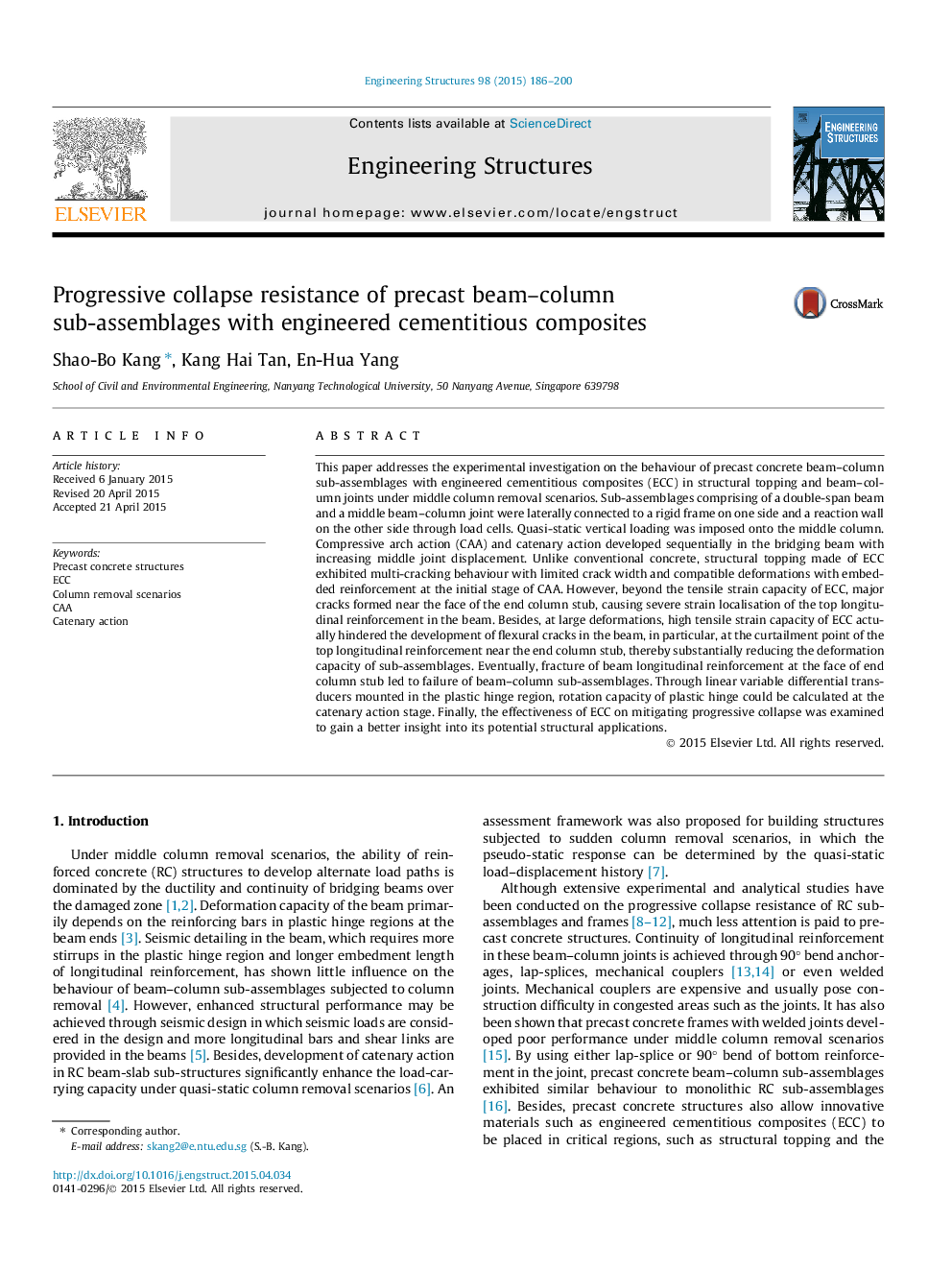| کد مقاله | کد نشریه | سال انتشار | مقاله انگلیسی | نسخه تمام متن |
|---|---|---|---|---|
| 266234 | 504346 | 2015 | 15 صفحه PDF | دانلود رایگان |
• Beam–column sub-assemblages were able to develop significant compressive arch action under column removal scenarios.
• Limited catenary action was obtained due to premature fracture of beam top reinforcement near the end column stub.
• At large deformation stage, a single major crack was formed near the end column stub, leading to localisation of plastic hinge rotations at the beam end.
This paper addresses the experimental investigation on the behaviour of precast concrete beam–column sub-assemblages with engineered cementitious composites (ECC) in structural topping and beam–column joints under middle column removal scenarios. Sub-assemblages comprising of a double-span beam and a middle beam–column joint were laterally connected to a rigid frame on one side and a reaction wall on the other side through load cells. Quasi-static vertical loading was imposed onto the middle column. Compressive arch action (CAA) and catenary action developed sequentially in the bridging beam with increasing middle joint displacement. Unlike conventional concrete, structural topping made of ECC exhibited multi-cracking behaviour with limited crack width and compatible deformations with embedded reinforcement at the initial stage of CAA. However, beyond the tensile strain capacity of ECC, major cracks formed near the face of the end column stub, causing severe strain localisation of the top longitudinal reinforcement in the beam. Besides, at large deformations, high tensile strain capacity of ECC actually hindered the development of flexural cracks in the beam, in particular, at the curtailment point of the top longitudinal reinforcement near the end column stub, thereby substantially reducing the deformation capacity of sub-assemblages. Eventually, fracture of beam longitudinal reinforcement at the face of end column stub led to failure of beam–column sub-assemblages. Through linear variable differential transducers mounted in the plastic hinge region, rotation capacity of plastic hinge could be calculated at the catenary action stage. Finally, the effectiveness of ECC on mitigating progressive collapse was examined to gain a better insight into its potential structural applications.
Journal: Engineering Structures - Volume 98, 1 September 2015, Pages 186–200
